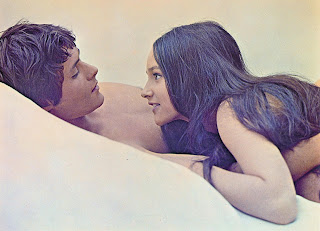In the 90s, when I tapped to become a regular weekly contributor on local morning news programs, there was a breeze but it was not a sweet one of diversity and inclusion. When I pitched to do positive features on African-American and Latinx talent, my pitches were met with resistance from white producers. A couple of those producers in charge did not even know I'd had my own talk show, a show that got my photo (and a good review) on the front page of the Arts & Leisure section one Sunday in The New York Times. Trying to get the ok to do positive LGBT features was the biggest battle. My WNBC news director in the early 90s would not air my taped interview of Harvey Fierstein, the noted Tony-winning actor and playwright. He was promoting MRS. DOUBTFIRE in my interview. Why wouldn't he allow it to air? He said, "I have a problem with him being openly gay." During my WNBC years, my partner had been diagnosed with full-blown AIDS. In those days, the early 90s, AIDS was treated like leprosy in an old movie about Medieval times. There was intense marginalization and discrimination. My partner, when hospitalized, was in a quarantined section. There were many nights when I slept sitting upright in a chair next to his bed, then left the hospital at 3:00am to dash home, shower and shave, and catch a cab to WNBC so I could be at work at 4:30am.
I wanted to do a series of features on how to be an effective caregiver to someone with AIDS. I wanted to share what I'd learned thanks to doctor, nurses, and the GMHC (Gay Men's Health Crisis) on New York City. I know I wasn't the only person enduring that kind of drama. But, again, we were not being seen -- "we" being people of color and gay people. I could not even mention that I was gay and caring for a partner dying of AIDS. I could not be seen interviewing Harvey Fierstein. I could not get approval to be live at a weekend morning street fair fundraiser for SAGE, a non-profit organization that benefits older members of the LGBTQ community. Those are reasons why I quit that job and walk away from a hit weekend morning show.
On VH1, Harvey Fierstein had been a guest on my talk show. I talked LGBT milestones in music. I praised a fabulous drag queen we see in the LOVE SHACK music video from the B-52s. That drag queen was named RuPaul. VH1. The difference between entertainment programming and news. From 2006 to 2008, I was on national radio thanks to Whoopi Goldberg. She had a weekday morning radio show out of New York City and she hired me to a member of her on-air team. Our team participated in the 2007 AIDS Walk New York. On the show, she generously let me talk about how the GMHC gave me the information and strength to be a good caregiver when my partner was diagnosed with AIDS. Whoopi hired me because she liked being a guest on my old VH1 show.
I know that, in my long career, being Black and gay were reasons why broadcast agents turned me down for representation -- even when I had national TV gigs. I knew I might have that barricade in my journey but I was determined to get visibility and to bring others who did not see themselves on TV into the light. We call the march a PRIDE march because our community had been shamed unfairly. We've needed to be a tribe to support each other. I loved my mother. For all her education and wit, she could not initially accept that I was gay. For years, she would not let me into her house because I'm gay. Ironically, I had assumed and paid off her mortgage five years ahead of schedule when she decided not to let me into the house. In the last five years of her life, things changed. Our relationship was wonderful in those years. Think of LGBT kids who are kicked out of their homes, bullied in schools and made to feel like misfits.
In that one hour ABC telecast before the march kicked off, Geo Benitez interview an African American lesbian who was at Stonewall 1969. She mentioned that she's now a member of SAGE. Gio interviewed a muscular and handsome young man who is HIV positive. He talked about the daily pill he takes before going about his busy day. The wonders of medicine since the dark early days of the AIDS crisis. Gio toss over to Sam Champion who was in the theatre district live with out and proud Broadway actors.
I would have given anything to be a live contributor for World Pride Day in NYC. To see and feel the history, to know the obstacles we've overcome, to see the embrace of diversity and inclusion by TV executives -- my heart filled with pride and my eyes filled with tears. It was exactly the kind of diversity, inclusion and information I wanted to present on TV back in the 1990s when I was doing local morning TV news. I was jealous of Gio Benitez in a very good way.
I want to do TV again. Not TV news (I got turned down by GOOD MORNING AMERICA and CBS SUNDAY MORNING). I'd love to get back on TV, older and wiser and prouder, to give you some entertainment. Happy Pride! Love yourself. Be kind. THANKS to all you great straight allies.




















































